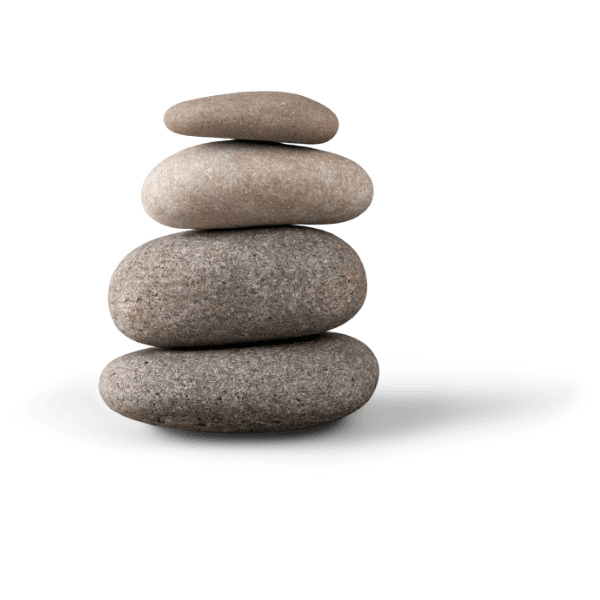We answer your frequently asked questions about osteopathy and how it works.

This history of osteopathic medicine in Canada
The history of osteopathic medicine in Canada is relatively short. Osteopathy was first brought to Canada in the early 1900s by American osteopathic physicians. Canadian osteopaths were initially trained in the United States, but the first Canadian osteopathic college was established in Toronto in 1919.
Osteopathic physicians ( also called osteopaths) are trained in the diagnosis and treatment of a wide range of medical conditions.
The musculoskeletal system includes all the bones, muscles, joints, and other tissues that make up the body.
The osteopathic philosophy is that this system is intimately connected with all the other systems of the body and that it plays a vital role in maintaining overall health.
What is Osteopathy?
Osteopathy is a holistic system of medicine that focuses on the musculoskeletal system. It is based on the principle that the body has the ability to heal itself and that the structure and function of the body are interrelated.
Osteopathy uses a variety of techniques to assess and treat patients, including manual manipulation, gentle stretching, and massage. Osteopathy is a drug-free, non-invasive approach to health care that can be used to treat a wide range of conditions and improve overall health.
Conditions that can be treated with osteopathy include:
- Back pain
- Neck pain
- Joint pain
- Knee pain
- Arthritis
- Head
Can you treat asthma with osteopathy?
There is no definitive answer to this question as the effectiveness of osteopathy in the treatment of asthma has not been scientifically proven. However, some people with asthma find that osteopathic treatment helps to relieve their symptoms.
Osteopaths often work with other health care professionals, such as physiotherapists and chiropractors, to provide a comprehensive approach to health care.
Can osteopathy help with my breathing?
Osteopathy may help to improve your breathing by freeing up the structures in your chest and abdomen that are responsible for respiration. Osteopathic treatment can also help to relieve stress and tension, which can contribute to asthma and other respiratory conditions.
What is Osteopathic Medicine?
Osteopathic medicine is a branch of the medical profession that focuses on the musculoskeletal system. An osteopathic physician is trained to diagnose and treat conditions that affect the bones, muscles, and joints.
Is there science behind osteopathy?
Yes. Osteopathy is based on the principle that the body has the ability to heal itself. This principle is supported by a growing body of scientific evidence.
A number of clinical trials have shown that osteopathic manipulation is effective for treating a variety of conditions, including low back pain, neck pain, and headaches.
Can anyone see an osteopath?
Yes. Osteopathy is suitable for all ages and can be used to treat a wide range of conditions.
What is an Osteopath?
An osteopath is a medical doctor who has completed additional training in the diagnosis and treatment of conditions that affect the musculoskeletal system. In Canada, osteopaths must complete a four-year undergraduate degree, followed by a four-year osteopathic medicine program.
How are Osteopathic Doctors trained?
The majority of applicants for osteopathic doctoral training have a bachelor’s, master’s, or doctorate. Osteopaths are trained in muscles. But they learn everything else in modern medicine. They can provide medications, perform surgical procedures or test you and all the other services that you might need from a doctor.
During the fourth year of medicine, an osteopathic physician is required to complete residency programs in the specialty of their choice. They can become doctors or specialists like cardiologists, nephrologists and pediatricians.
Osteopathic physicians vs. Naturopathic Practitioners
Osteopathic medicine and naturopathic medicine are both types of alternative medicine. Naturopathic practitioners focus on natural remedies and preventive care, while osteopaths focus on the musculoskeletal system.
What is the Difference Between Osteopathy and Chiropractic?
Osteopaths and chiropractors are both trained to diagnose and treat conditions that affect the musculoskeletal system. However, there are some key differences between these two professions.
Osteopaths focus on the relationship between the structure and function of the body, while chiropractors focus on the alignment of the spine. In addition, osteopaths are trained in a variety of manual therapies, while chiropractors are trained primarily in spinal manipulation.
What is the Difference Between Osteopathy and Physical Therapy?
Physical therapists focus on rehabilitation after an injury or surgery.
What is the Difference Between Osteopathy and Massage Therapy?
Massage therapists focus on the muscles and soft tissues of the body.
Can Anyone Practice Osteopathy?
In Canada, only medical doctors who have completed additional training in osteopathic medicine can practice osteopathy. Naturopathic practitioners cannot legally practice osteopathy in Canada.
What Are the Side Effects of Osteopathic Treatment?
Osteopathic treatments are generally safe and side effects are rare. The most common side effect is soreness or tenderness in the treated area. This usually goes away within 24 hours.
If you have any concerns about treatment, be sure to speak with your health care provider.
When Should I See an osteopathic physician?
You should see osteopathic physicians if you are experiencing pain in the body’s musculoskeletal system that does not respond to over-the-counter medication. You may also want to see an osteopath if you are interested in a drug-free approach to health care.
Be sure to speak with your primary care physician before making an appointment with an osteopath.
How often should you see an osteopathic physician?
The frequency of treatment varies depending on the condition being treated. Some conditions may require weekly visits, while others may only need to be seen every few months. Speak with your osteopathic physician about how often you should schedule appointments.
What Should I Expect During My First Osteopathic Appointment?
During your first appointment, the osteopath will take a medical history and conduct a physical examination. The osteopath will then develop a treatment plan based on your individual needs.
What is Osteopathic Manipulative Treatment (OMT)?
OMT is a hands-on therapy used by osteopaths to diagnose and treat conditions that affect the body’s musculoskeletal system. OMT can be used to treat a wide variety of conditions, including headaches, back pain, carpal tunnel syndrome, and TMJ disorders.
What are the Benefits of Osteopathic Manipulative Medicine?
Osteopathy can provide relief from pain, improve range of motion, and help the body to heal itself. Osteopathic manipulative medicine is generally considered to be safe when performed by a trained and licensed osteopath.
The benefits of osteopathic medicine include:
- A drug-free approach to health care
- A focus on preventive medicine
- A holistic approach to health care
- An emphasis on the musculoskeletal system
What are the risks?
There are very few risks associated with osteopathic medicine. The most common side effects are temporary and may include mild discomfort or soreness.
Is osteopathy safe for pregnant women and children?


Osteopathy is considered safe for pregnant women and children. OMT can be used to treat a variety of conditions that may occur during pregnancy, such as back pain and carpal tunnel syndrome.
Can an osteopath cause nerve damage?
No. Osteopaths are trained to avoid putting pressure on nerves.
What should I expect during an Osteopathic Manipulative Treatment session?
Osteopathic manipulation is typically conducted in a series of sessions. Each session lasts 30-60 minutes.
During an OMT session, the osteopath will use his or her hands to examine the muscles, joints, and tissues of the body. The osteopath will then use a variety of techniques to manipulate the musculoskeletal system. These techniques may include stretching, massage, and gentle pressure.
How often should I receive Osteopathic Manipulative Treatment?
The frequency of OMT sessions will vary depending on the condition being treated. Some conditions may resolve after just one or two sessions, while others may require ongoing treatment.
Is Osteopathic Manipulative Treatment covered by insurance in Ontario?
At this time, OHIP does not cover OMT. However, many private health insurance providers do provide coverage for Osteopathic Manipulative Treatment
What is the Cost of OMT?
Osteopathic medicine is covered by some private health insurance plans in Canada. Check with your insurance provider to see if osteopathic services are covered under your plan. The average cost of treatment is $50-$150 per session.
Can you combine osteopathic medicine with other treatments?
Yes. Osteopathic medicine can be used in conjunction with other forms of treatment, such as medication or surgery. As always, be sure to speak with your primary care physicians about all of your treatment options.
Can osteopathy be used as an alternative to prescription medicine?
Osteopathic medicine is not meant to be used as an alternative to conventional medicine. However, osteopathy can be used to complement other forms of treatment.
If you are considering using osteopathy as an alternative to prescription medication, please speak with your primary care physician first.
Common myths about osteopathy


Like many alternative medicines, there are some common myths surrounding osteopathy:
- Is a new age alternative medicine.
- Osteopathy is not a pseudoscience.
- Osteopathy is not dangerous.
- You do not have to be in pain to see an osteopath.
How do I find an osteopath?
In Canada, osteopaths are regulated health professionals. To find a Registered Osteopathic Practitioner (ROP) in your area, you can search the directory of the Canadian Federation of Osteopaths.
For additional information or to book an appointment, contact our Osteopath Kavneet Kaur at Back in Balance.






